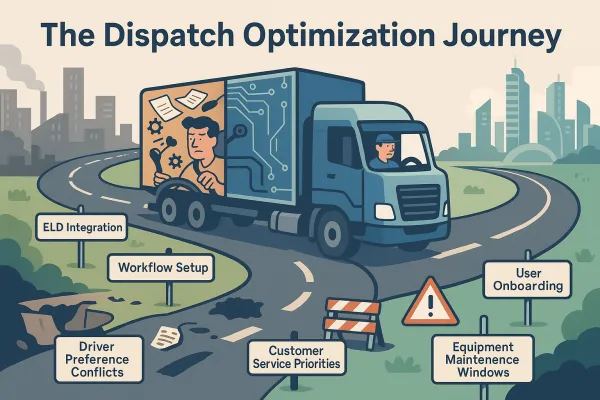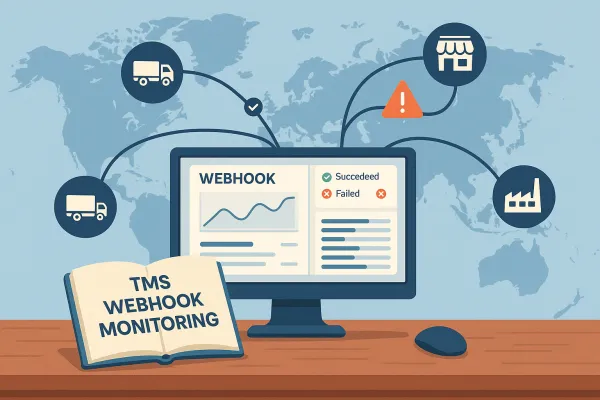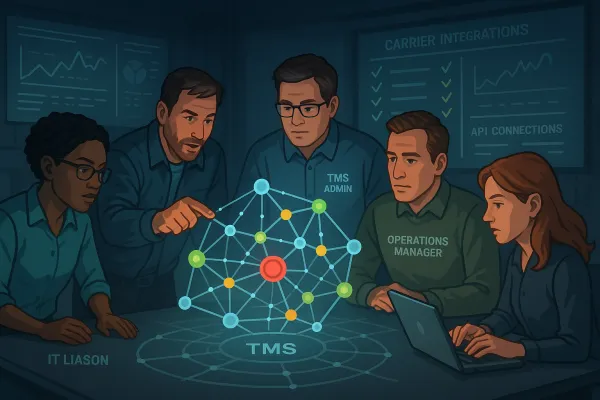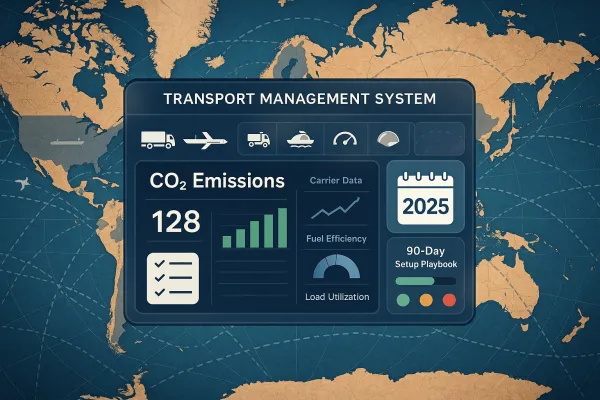Carrier API Failures: The 30-Minute Response That Saves Your Shipments
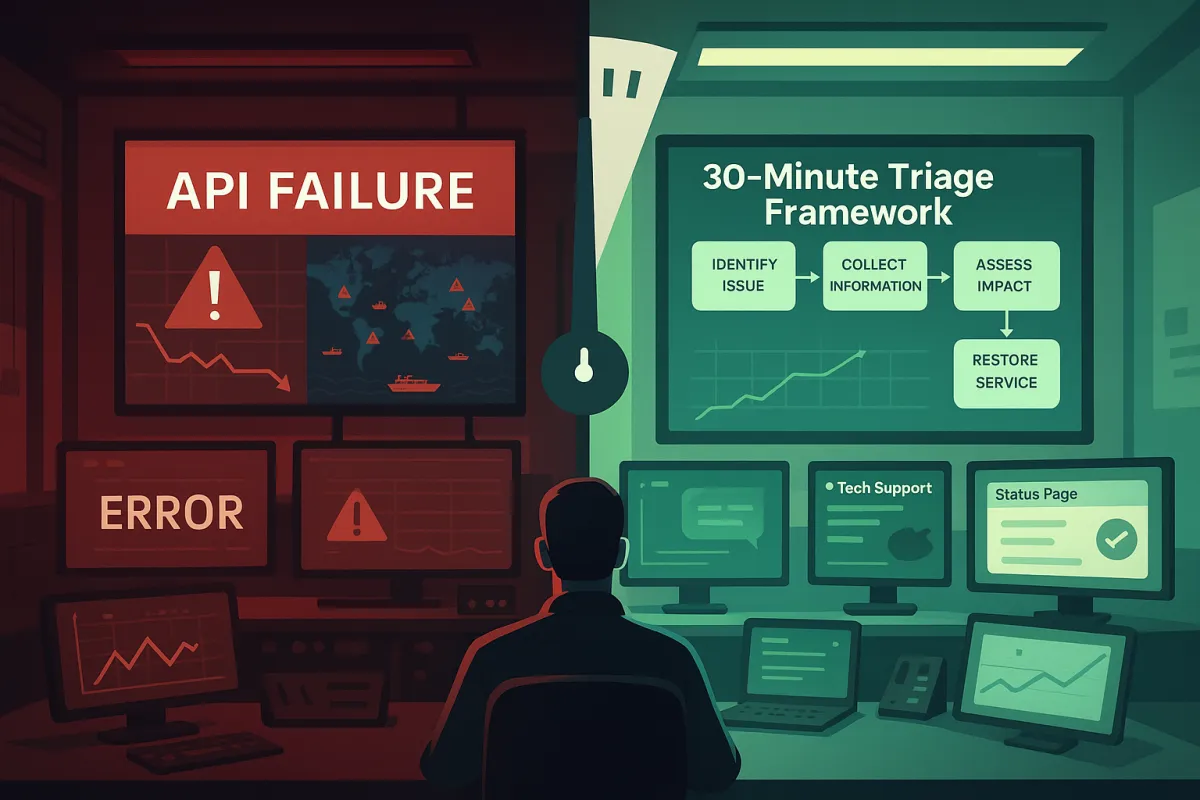
Monday morning, 9:15 AM. Your UPS rate requests have been timing out for the past 20 minutes. Tracking updates are frozen. Label generation just failed on 47 shipments stuck in "processing" status, and your customer service team is fielding angry calls about missing delivery updates.
Sound familiar? When ORBCOMM experienced a ransomware attack on September 6, 2023, it impacted some of the country's largest freight transportation companies, forcing thousands of truckers back to paper logs and leaving operations teams scrambling for alternatives.
Carrier API failures happen more often than most operations teams want to admit. When your primary carrier integration goes dark, you need a tested playbook that gets shipments moving again within 30 minutes. Here's the framework that actually works.
The Incident: When UPS Integration Goes Dark
Picture this: peak shipping hours on a Tuesday, and suddenly your TMS can't communicate with UPS. Rate requests are returning timeouts. Tracking status updates have stopped flowing. Your automated label generation workflow just crashed trying to process the morning's shipment queue.
Within minutes, you're looking at cascading failures. Shipments stalled in your system, customer emails flooding in about missing tracking information, and your team manually checking UPS.com to provide updates to frustrated customers.
This isn't just about technology failing. The costs add up quickly - failed implementations waste budget and time, but they also damage relationships with carriers and customers who experience service disruptions.
The root causes vary: authentication token expiry, carrier-side infrastructure issues, API rate limits exceeded, or network connectivity problems. UPS implemented an OAuth 2.0 security model for all APIs in 2024, requiring clients to implement the OAuth security model with bearer tokens by June 3, 2024. Many companies discovered their integrations broke overnight when the old access key system was deprecated.
The 30-Minute Triage Framework
You need a systematic approach that moves from diagnosis to workaround to recovery. Here's what works:
Minutes 1-5: Rapid Diagnosis
Start with external validation. Check the carrier's API status page immediately - UPS provides real-time API health tracking to stay up to date on issues such as network or system outages, scheduled maintenance, and resolved issues. FedEx and DHL have similar dashboards.
If their status shows green, the problem is likely on your end. Check these items in order:
Authentication tokens first. Most API failures trace back to expired credentials or OAuth configuration issues. Your TMS should log authentication responses - look for HTTP 401 or 403 errors.
Network connectivity next. Can you reach the carrier's API endpoints from your TMS server? Simple ping tests reveal network-level blocks.
Rate limits third. API-first organizations recover from API failures faster, often within an hour, partly because they monitor rate limit consumption proactively.
Minutes 6-15: Immediate Workarounds
While diagnosis continues, activate backup systems. Your TMS should support multiple carrier integrations for exactly this scenario.
Switch to secondary carriers for new shipments. If UPS is down, route urgent shipments through FedEx or regional LTL carriers. Most TMS platforms like Cargoson, MercuryGate, or Descartes support this failover automatically.
Use manual rate lookup for time-sensitive quotes. Keep carrier rate sheets accessible for common lanes. Yes, it's slower than API rates, but it keeps business moving.
Communicate proactively with customers. Send updates about potential delays before they call you. Most customers appreciate transparency over silence.
Minutes 16-30: Escalation and Recovery
Now you're stabilizing operations while working toward full restoration.
Contact your carrier integration team. Most major carriers provide dedicated technical support for API issues. Have your TMS logs ready - they'll want specific error messages and timestamps.
Test alternative integration paths. Even though APIs are technically superior to EDI, much of the logistics industry still relies on EDI, particularly smaller companies that don't have the IT resources for full-scale API rollout. Your TMS might support both API and EDI connections to the same carrier.
Document everything for post-mortem analysis. Failed authentication attempts, error codes, and timeline details help prevent recurrence.
Tools You Need in Your Emergency Kit
Smart operations teams prepare for API failures before they happen.
Status page monitors save precious diagnosis time. Set up alerts for UPS Developer Kit status, FedEx APIs, and DHL Express APIs. When their systems go down, you'll know within minutes rather than discovering it through failed shipments.
Multiple authentication methods provide resilience. Store backup API keys, OAuth tokens, and EDI credentials separately. If your UPS account was connected before June 3, 2024, you'll need to reconnect to re-establish OAuth API connection, and changing your UPS account password requires reconnection.
Alternative rate sources like Banyan Technology, project44, or nShift enable quick carrier switching when primary integrations fail. Banyan's freight management software features comprehensive TMS and API connectivity for LTL, Truckload, Parcel and Final Mile shipping, providing multiple carrier connections under one platform.
Post-Incident Analysis: What Really Broke
Not all API failures are created equal. Understanding the difference helps prevent future incidents.
Authentication token expiry represents 40% of carrier API failures. OAuth tokens expire, API keys get rotated, or password changes break connections. The fix is straightforward once you identify it, but detection takes time without proper monitoring.
Carrier-side outages affect everyone using that integration simultaneously. The September 2023 ORBCOMM ransomware attack temporarily impacted their FleetManager platform and BT product line, which customers use to track and monitor transportation assets. When these happen, your only option is switching to alternative carriers or manual processes.
Rate limit exceeded errors occur when your system makes too many API calls too quickly. This becomes common during peak shipping seasons or when batch processes run during business hours. Most carriers publish rate limits in their documentation - monitor your usage against these thresholds.
The ORBCOMM incident demonstrates how infrastructure attacks can cascade through the transportation network. BleepingComputer learned that this outage impacted some of the country's largest freight transportation companies as they could not track their fleets and inventory. While you can't prevent ransomware attacks on your carriers, you can prepare backup systems and processes.
Prevention Checklist for Your TMS Setup
Proactive monitoring catches problems before they impact shipments.
API health checks should run every few minutes against your primary carriers. Test authentication, rate requests, and tracking lookups continuously. Alert your operations team when any check fails twice in a row.
Credential rotation schedules prevent expiry-related failures. Most OAuth tokens expire in 60-90 days. Build automated renewal processes, or at minimum, calendar reminders to refresh tokens before expiry.
Rate limit tracking helps avoid usage-based failures. Monitor your daily API call volume against carrier limits. When you approach 80% of daily limits, throttle non-critical requests or spread them across more time.
Multiple carrier integrations provide redundancy. Don't rely on single carriers for critical lanes. Platforms like Transporeon, Blue Yonder, or Cargoson make it easier to maintain connections to multiple carriers simultaneously.
Manual process documentation becomes critical when automation fails. Keep current rate sheets, tracking contact information, and escalation procedures accessible to your team. Handling a carrier outage is not just about getting through it - it's about finding a way for your business to keep operating and making money, with backup carrier rates specifically designed to help mitigate carrier outages.
The Bigger Picture: 2025 Connectivity Trends
The carrier connectivity landscape continues evolving rapidly. Even though APIs are technically superior to EDI in many ways, much of the logistics industry still has yet to deploy them in any significant way, meaning that EDI still plays an important role in today's freight ecosystem.
74% of organizations are API-first in 2024, up from 66% in 2023, indicating widespread adoption of API-driven integrations. This creates both opportunities and risks for shipping operations.
Real-time digital data exchange eliminates manual work and transmission errors compared to traditional EDI batch processing. But it also means failures happen immediately rather than being absorbed by batch processing windows.
Future-proofing your carrier integration strategy means maintaining both API and EDI capabilities where possible, implementing robust monitoring and alerting, and building relationships with multiple carriers per lane.
Your 90-Day Action Plan
Start with immediate fixes that reduce your exposure to single points of failure.
Week 1: Audit your current carrier connections. Test failover procedures during off-peak hours. Identify gaps in monitoring and alerting. Document your current incident response process.
Month 1: Implement API health monitoring tools. Set up backup carrier relationships for critical lanes. Create customer communication templates for service disruptions. Train your operations team on manual backup procedures.
Quarter 1: Evaluate additional carrier integrations to strengthen redundancy. Consider TMS platforms that provide built-in carrier diversity. Review and update credential rotation procedures. Establish formal relationships with carrier technical support teams.
The cost of preparation is always lower than the cost of recovery. More than 50% of TMS adopters see positive ROI within 18 months, but that requires systems that work reliably when you need them most.
Carrier API failures will happen. The question isn't whether your integrations will fail, but how quickly your team can restore operations and minimize business impact. With the right preparation and a tested response framework, what could be a day-long crisis becomes a 30-minute inconvenience.


